
Scholarly Literature
This is a database of scholarly literature that concentrates currently on natural and engineered selfish genetic elements (gene drives). The latest are shown here.
Disclaimer>
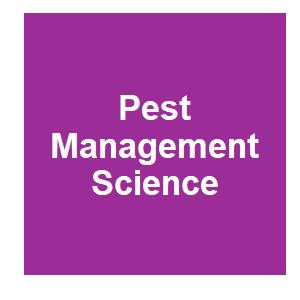
|
Economic optimization of Wolbachia-infected Aedes aegypti release to prevent dengueHollingsworth BD, Cho C, Vella M, Roh H, Sass J, Lloyd AL, Brown ZS., Pest Management Science, 2024.
Dengue virus, primarily transmitted by the Aedes aegypti mosquito, is a major public health concern affecting ≈3.83 billion people worldwide. Recent releases of Wolbachia-transinfected Ae. aegypti in several cities worldwide have shown that it can reduce dengue transmission. ... Keywords: Aedes aegypti, optimal control, wolbachia |

|
Allele Sails: launching traits and fates into wild populations with Mendelian DNA sequence modifiersMichelle L. Johnson, Bruce A. Hay, Maciej Maselko, bioRxiv, 2024.
Population-scale genome editing can be used to alter the composition or fate of wild populations. One approach to achieving these aims utilizes a synthetic gene drive element—a multi-gene cassette—to bring about an increase in the frequency of an existing allele. However, the ... Keywords: Aedes aegypti, optimal control, wolbachia |
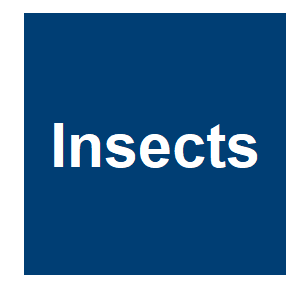
|
Wolbachia Infection through Hybridization to Enhance an Incompatible Insect Technique-Based Suppression of Aedes albopictus in Eastern SpainCholvi, M.; Trelis, M.; Bueno-Marí, R.; Khoubbane, M.; Gil, R.; Marcilla, A.; Moretti, R., Insects, 15:206. 2024.
The emergence of insecticide resistance in arbovirus vectors is putting the focus on the development of new strategies for control. In this regard, the exploitation of Wolbachia endosymbionts is receiving increasing attention due to its demonstrated effectiveness in reducing the ... Keywords: Aedes aegypti, optimal control, wolbachia |
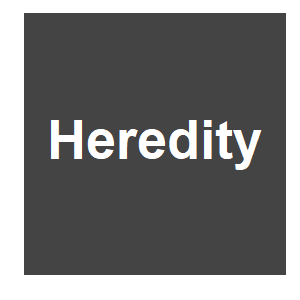
|
Genetic and geographic population structure in the malaria vector, Anopheles farauti, provides a candidate system for pioneering confinable gene-drive releasesAmbrose, L., Allen, S.L., Iro’ofa, C. et al., Heredity, 2024.
Indoor insecticide applications are the primary tool for reducing malaria transmission in the Solomon Archipelago, a region where Anopheles farauti is the only common malaria vector. Due to the evolution of behavioural resistance in some An. farauti populations, these ... Keywords: Aedes aegypti, optimal control, wolbachia |

|
The Perpetual Vector Mosquito Threat and Its Eco-Friendly NemesesMiranda, L.S.; Rudd, S.R.; Mena, O.; Hudspeth, P.E.; Barboza-Corona, J.E.; Park, H.-W.; Bideshi, D.K., Biology, 13:182. 2024.
Aedes, Culex, and Anopheles mosquitoes are the most prolific arthropod vectors of viral and parasitic agents of debilitating and lethal diseases in humans and animals. Despite some success in integrated pest management programs to control vectors, mosquito-borne diseases, such as ... Keywords: Aedes aegypti, optimal control, wolbachia |

|
Wolbachia Infection through Hybridization to Enhance an Incompatible Insect Technique-Based Suppression of Aedes albopictus in Eastern SpainCholvi M, Trelis M, Bueno-Marí R, Khoubbane M, Gil R, Marcilla A, Moretti R., Insects, 15. 2024.
Wolbachia bacteria occur naturally as symbionts of many insect species and are responsible for various phenomena that modify the hosts’ reproductive biology. Among them, cytoplasmic incompatibility (CI) refers to the sterility of eggs produced by crosses between infected males ... Keywords: Aedes aegypti, optimal control, wolbachia |
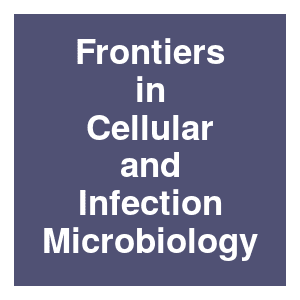
|
Detection and quantification of natural Wolbachia in Aedes aegypti in Metropolitan Manila, Philippines using locally designed primersReyes JIL, Suzuki T, Suzuki Y, Watanabe K., Frontiers in Cellular and Infection Microbiology, 2024.
The Philippines bears health and economic burden caused by high dengue cases annually. Presently, the Philippines still lack an effective and sustainable vector management. The use of Wolbachia, a maternally transmitted bacterium, that mitigate arbovirus transmission has been ... Keywords: Aedes aegypti, optimal control, wolbachia |

|
Talking About Gene Drive in Uganda: The Need for Science Communication to Underpin EngagementHartley, S., Stelmach, A., Opesen, C., Openjuru, G. L., and Neema, S., Science Communication, 2024.
Uganda may host the world’s first field trials of gene drive mosquitoes for malaria control. Global North discourses pre-suppose African publics have access to information about gene drive and are ready to make decisions about its governance. We explore assumptions about the ... Keywords: Aedes aegypti, optimal control, wolbachia |

|
Monitoring Aedes populations for arboviruses, Wolbachia, insecticide resistance and its mechanisms in various agroecosystems in BeninS. Ateutchia-Ngouanet, F. Nanfack-Minkeu, K. Mavridis, S. Wanji, M. Demanou, J. Vontas, R. Djouaka, Acta Tropica, 253. 2024.
The susceptibility of arbovirus vectors to insecticides and the microbiome of Aedes species are understudied in Benin. Keywords: Aedes aegypti, optimal control, wolbachia |
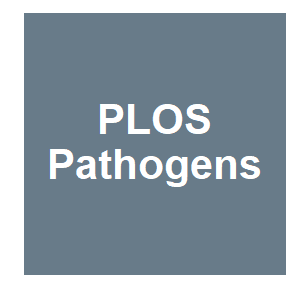
|
The Wolbachia WalE1 effector alters Drosophila endocytosisMaryAnn Martin,Sergio López-Madrigal,Irene L. G. Newton, PLoS Pathogens, 20. 2024.
The most common intracellular bacterial infection is Wolbachia pipientis. Keywords: Aedes aegypti, optimal control, wolbachia |
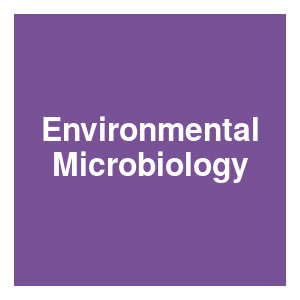
|
Wolbachia infection negatively impacts Drosophila simulans heat tolerance in a strain- and trait-specific mannerLiam F. Ferguson, Perran A. Ross, Belinda van Heerwaarden, Environmental Microbiology, 26. 2024.
The susceptibility of insects to rising temperatures has largely been measured by their ability to survive thermal extremes. Keywords: Aedes aegypti, optimal control, wolbachia |

|
Between the lab and the Wild: Establishing the Potential of Gene Drive Mosquitoes for Malaria ControlMäkelin, M., Science as Culture, 2024.
Malaria control has been one of the defining goals in global health. Keywords: Aedes aegypti, optimal control, wolbachia |

|
Wolbachia strain wAlbB shows favourable characteristics for dengue control use in Aedes aegypti from Burkina FasoMaria Vittoria Mancini, Shivan M. Murdochy, Etienne Bilgo, Thomas H. Ant, Daniel Gingell, Edounou Jacques Gnambani, Anna-Bella Failloux, Abdoulaye Diabate, Steven P. Sinkins, Environmental Microbiology, 26. 2024.
Dengue represents an increasing public health burden worldwide. Keywords: Aedes aegypti, optimal control, wolbachia |

|
Quantifying Fitness Costs in Transgenic Aedes aegypti MosquitoesWilliams, A. E., Sanchez-Vargas, I., Martin, L. E., Martin-Martin, I., Bennett, S., Olson, K. E., Calvo, E., The Journal of Visualized Experiments, 199. 2024.
The present protocol describes how to measure common life parameter data in Aedes aegypti mosquitoes, including fecundity, wing size, fertility, sex ratio, viability, development times, male contribution, and adult longevity. Keywords: Aedes aegypti, optimal control, wolbachia |
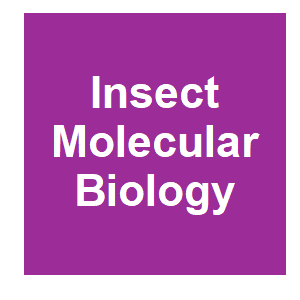
|
Alpha-mannosidase-2 modulates arbovirus infection in a pathogen- and Wolbachia-specific manner in Aedes aegypti mosquitoesNadya Urakova, Renuka E. Joseph, Allyn Huntsinger, Vanessa M. Macias, Matthew J. Jones, Leah T. Sigle, Ming Li, Omar S. Akbari, Zhiyong Xi, Konstantinos Lymperopoulos, Richard T. Sayre, Elizabeth A. McGraw, Jason L. Rasgon, Insect Molecular Biology, 2024.
Multiple Wolbachia strains can block pathogen infection, replication and/or transmission in Aedes aegypti mosquitoes under both laboratory and field conditions. Keywords: Aedes aegypti, optimal control, wolbachia |

|
Prophage proteins alter long noncoding RNA and DNA of developing sperm to induce a paternal-effect lethalityRupinder Kaur et al., Science, 383:1111-1117. 2024.
Many arthropods carry symbiotic bacteria. Some, including Wolbachia strains, have the capacity to cause male sterility. Keywords: Aedes aegypti, optimal control, wolbachia |

|
Comparative analysis of Wolbachia maternal transmission and localization in host ovariesMichael T.J. Hague, Timothy B. Wheeler, Brandon S. Cooper, bioRxiv, 2024.
Keywords: Aedes aegypti, optimal control, wolbachia |

|
Acceptability of emergent Aedes aegypti vector control methods in Ponce, Puerto Rico: A qualitative assessmentPérez-Guerra CL, Rosado-Santiago C, Ramos SA, Marrero-Santos KM, González-Zeno G, Partridge SK, et al., PLoS Global Public Health, 2024.
Aedes aegypti control has been fraught with challenges in Puerto Rico. The government has implemented commonly used vector control methods, but arboviral epidemics still occur. It is necessary to explore new Ae. aegypti control methods. This study aimed to understand the ... Keywords: Aedes aegypti, optimal control, wolbachia |

|
Efficacy of Wolbachia-based mosquito control: Predictions of a spatially discrete mathematical modelDavid Dye, John W. Cain, PLoS One, 19. 2024.
Wolbachia is an endosymbiont bacterium present in many insect species. When Wolbachia-carrying male Aedes aegypti mosquitoes mate with non-carrier females, their embryos are not viable due to cytoplasmic incompatibility. This phenomenon has been exploited successfully for the ... Keywords: Aedes aegypti, optimal control, wolbachia |

|
Aedes aegypti Controls Ae. aegypti: SIT and IIT—An OverviewRobert L. Aldridge; Seth Gibson; Kenneth J. Linthicum, Journal of the American Mosquito Control Association, 20:32-49. 2024.
The sterile insect technique (SIT) and the incompatible insect technique (IIT) are emerging and potentially revolutionary tools for controlling Aedes aegypti (L.), a prominent worldwide mosquito vector threat to humans that is notoriously difficult to reduce or eliminate in ... Keywords: Aedes aegypti, optimal control, wolbachia |

Contact
David O’Brochta
Foundation for the
National Institutes of Health
geneconvenevi@fnih.org
RSS

